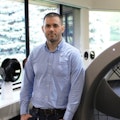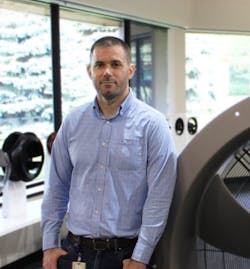As data centers continue to scale in size and complexity, the demand for energy-efficient, reliable, and adaptable cooling solutions has never been greater. Among the technologies rising to meet this challenge is Electronically Commutated (EC) fan technology—a solution that blends advanced motor control with high efficiency to support the evolving needs of modern infrastructure.
Understanding EC Fan Technology
At its core, EC fan technology integrates the benefits of both AC and DC motors into a single, brushless design. Unlike traditional AC motors that rely on mechanical commutation, EC motors use electronic circuitry to manage motor function. This allows for precise speed control, reduced energy consumption, and extended operational life. The brushless nature of EC motors eliminates one of the most common points of mechanical failure, significantly reducing maintenance requirements. Additionally, the use of permanent magnets and intelligent electronics enables these fans to operate with minimal energy loss, making them a compelling choice for applications where efficiency and reliability are paramount.
Why EC Fans Are Gaining Ground
The shift toward EC technology is driven by several key advantages:
- Energy Efficiency: EC fans can consume up to 50% less energy than their AC counterparts, contributing to lower operational costs and reduced environmental impact.
- Variable Speed Control: Unlike fixed-speed AC fans, EC fans can adjust their output dynamically based on real-time system demands, improving airflow management and system responsiveness.
- Reduced Heat and Noise: With lower energy loss comes less heat generation, which not only enhances system efficiency but also contributes to quieter operation—an important factor in noise-sensitive environments.
- Compact Design: EC fans are typically smaller and lighter, offering greater flexibility in system design and integration.
These characteristics make EC fans particularly well-suited for environments where uptime, efficiency, and adaptability are critical—none more so than in data centers.
Application in Data Center Environments
Data centers are among the most energy-intensive facilities in the world, with cooling systems accounting for a significant portion of total power usage. As operators seek to optimize thermal management while meeting sustainability goals, EC fan technology offers a practical and scalable solution. Whether deployed in air-cooled systems, liquid-to-air heat exchangers, or integrated into modular cooling units, EC fans provide the precision and efficiency needed to maintain stable operating conditions. Their ability to modulate airflow in response to fluctuating IT loads ensures that cooling is delivered where and when it’s needed, without unnecessary energy expenditure. EC fans support the design of high-density server environments by enabling more compact and efficient airflow solutions.
A Broader Industry Shift
The adoption of EC fan technology is part of a larger trend toward intelligent, adaptive infrastructure in the data center sector. As facilities become more automated and data-driven, components like EC fans, capable of integrating with building management systems and responding to real-time analytics, are becoming essential. This shift is not limited to new builds. Many operators are retrofitting existing systems with EC fans to capture energy savings and extend the life of their infrastructure. The plug-and-play nature of many EC fan designs simplifies this transition, allowing for upgrades without significant system overhauls.
Looking Ahead
As the data center industry continues to prioritize sustainability, efficiency, and resilience, technologies like EC fans will play a central role in shaping the future of cooling. Their combination of performance, adaptability, and energy savings aligns with the strategic goals of operators seeking to reduce carbon footprints while maintaining high service levels. In an era where every watt counts, EC fan technology offers a clear path forward—one that supports both operational excellence and environmental responsibility.
About the Author

John Palomba
John Palomba is Director VAC for ebm-papst Inc. Representing North and South America, ebm-papst Inc. is a key subsidiary of the globally renowned ebm-papst Group, the world’s leading manufacturer of fans and motors. ebm-papst Inc. provides air movement solutions for the data center market with an array of highly efficient products.



